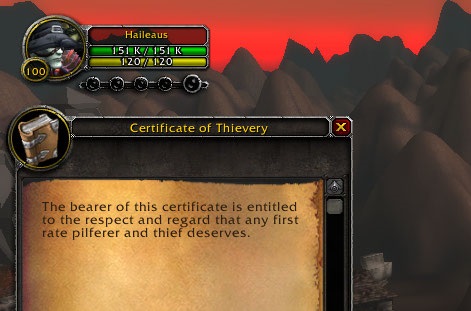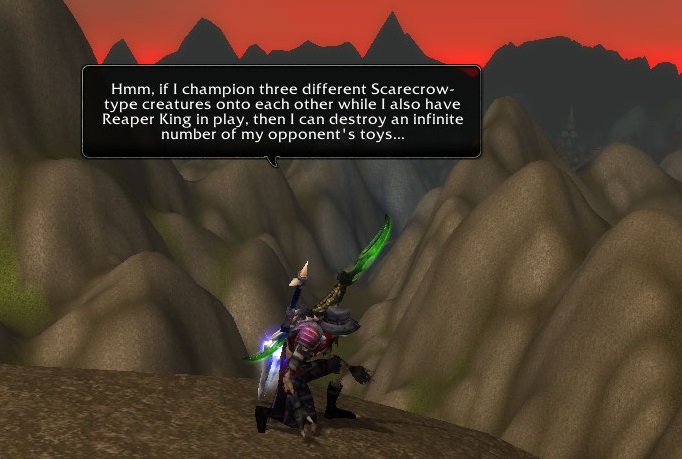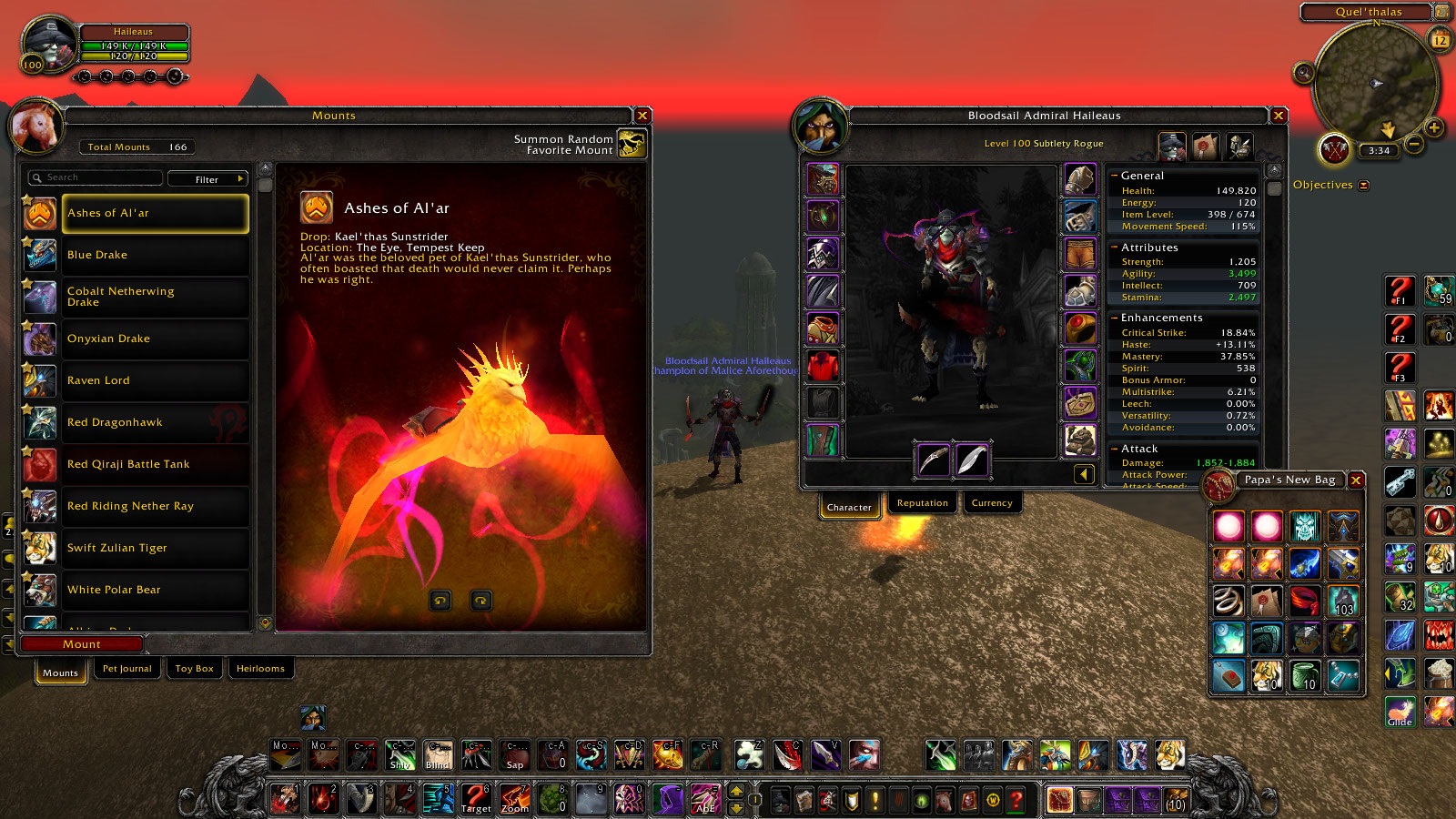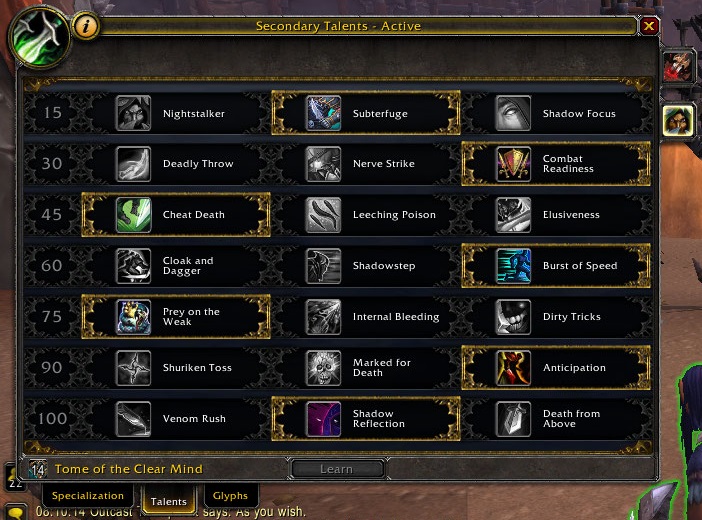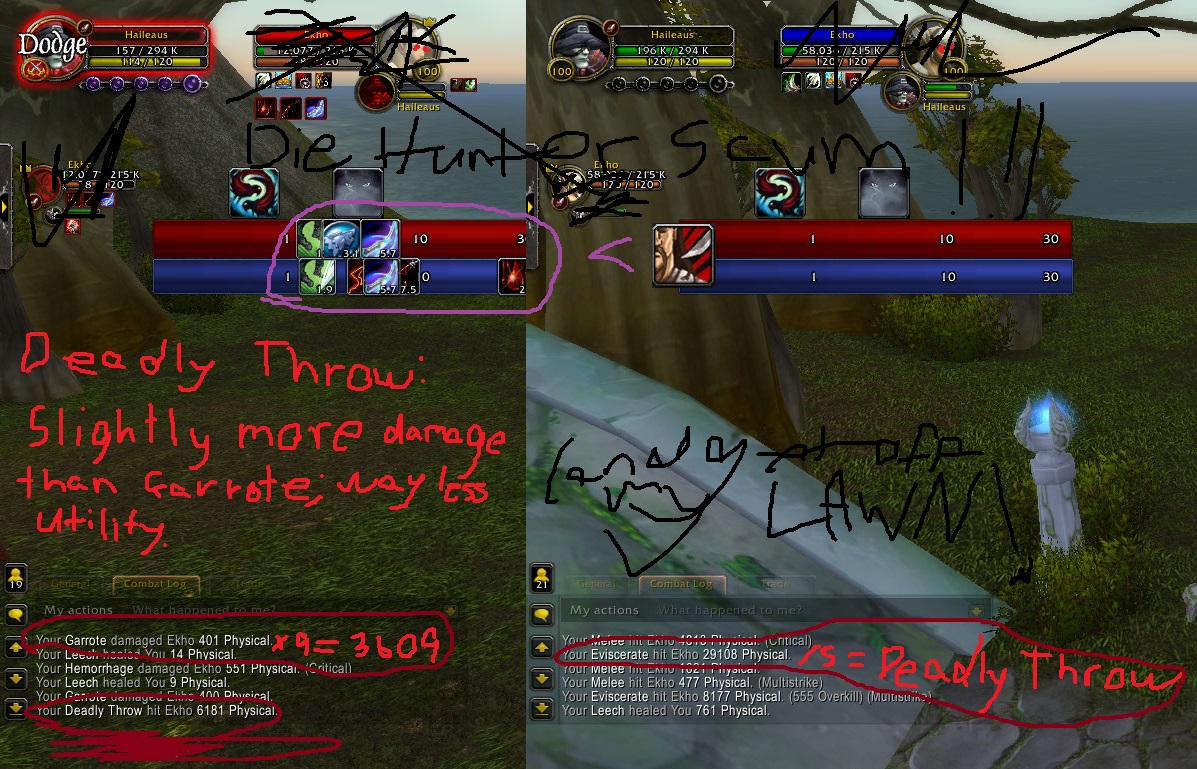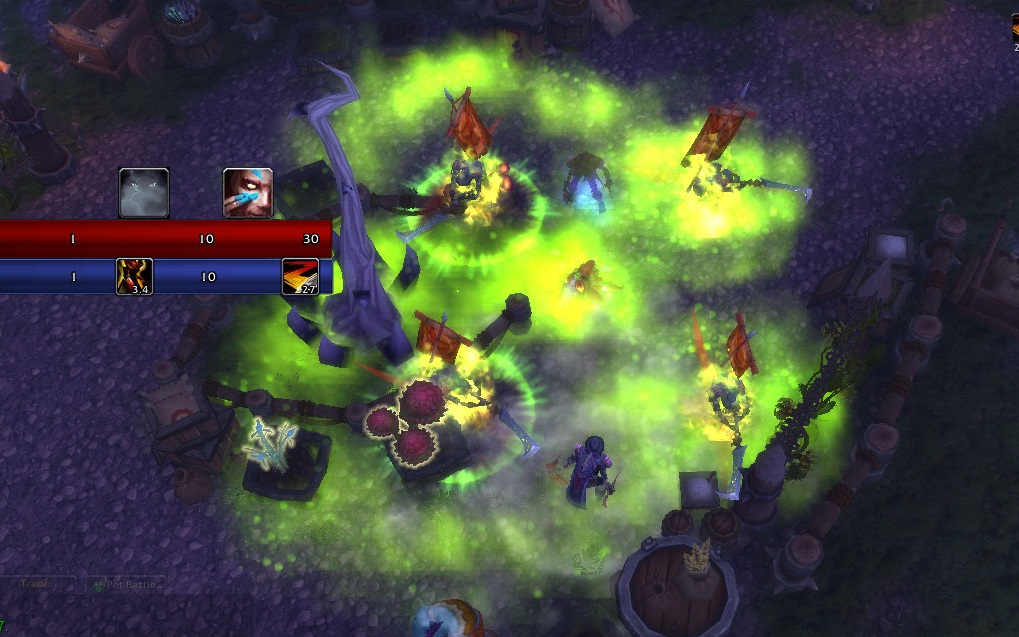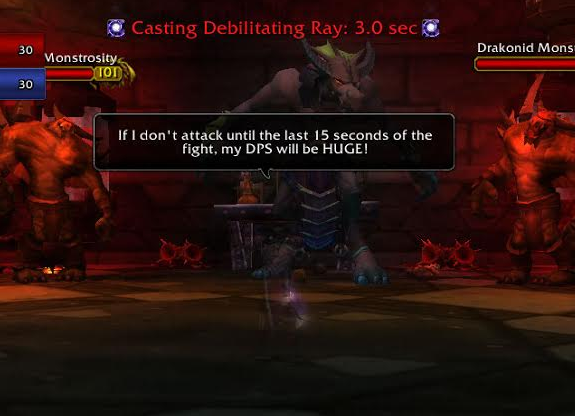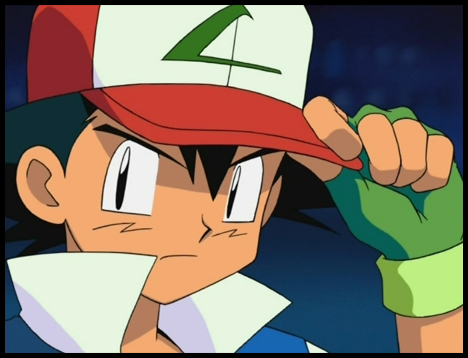*sneak sneak sneak*
*looks around*

Huh, looks like no one’s here….
*exits stealth*
Oh.
“Hi Par.”
“…”
“Um, been a while!”
“…”
“So…I’ll just get to writing then.”
Subtlety PvE Feedback: BfA Edition
After a bit of a break I’ve been playing World of Warcraft again and, after raiding for about 6 months, I feel I have a decent grasp on what current Subtlety is, and what direction I’d like it to move in going into the next expansion. In this post I’m going to start with some things I like about the spec since the last time I played seriously way back in Mists of Pandaria/Warlords of Draenor. Moving forward I’ll go into some of the things that I actively dislike about the spec. Finally I’ll wrap up with some thoughts on features that I like/dislike but can see others disagreeing with me. At least that’s the plan as I write this intro. Quick tip if you want to write feedback, separate things into Good, Bad, and Ugly. It gives you a nifty reference, a three part structure, and a place to put the thoughts that don’t fit nicely into “Good” and “Bad”.
Onwards!
Three Things I Like About Subtlety
Multiple charges on Shadow Dance feels fantastic.
Ever since Cataclysm when Blizzard decided that Subtlety should be playable in PvE there has been an ebb and flow to the spec. When ShD was down you’d be making sure your buffs and debuffs were maintained, and then when it was time to Dance, you’d have a nice burst window. The addition of charges on Dance gives the rogue much greater ability to control when those windows happen without sacrificing overall potential.
I love that on Lady Ashvane I am rewarded for being patient with my cooldown usage. Similarly I love that I don’t get punished for having my Dance come off cooldown right when a boss is about to make me leave melee range. Charges on Shadow Dance maintain Subtlety’s identity as a burst spec while allowing greater control of the spec’s natural ebb and flow.
Find Weakness, Dark Shadow, and Symbols of Death increase raw damage during burst windows.
All three of these abilities say the following: “When you get into Stealth/Dance, start dealing more damage.” I’m going to just talk about Find Weakness (FW) for now, because I think it is the best executed of the three. The great thing about FW is that it incentivizes the rogue to both begin and Dance with an opener and wait before using Dance a second time. While a bad Sub rogue might deal as much damage as a good one during Dance, outside of Dance the difference in Find Weakness uptime will reward patience and proper timing.
It also has a subtler benefit, which is of course the best kind of benefit for Sub. When I use Eviscerate during Symbols of Death, the entire finisher is buffed. If I use Nightblade, the part of the duration that doesn’t overlap with the debuff won’t get a benefit. I’m a sucker for small ways to increase my DPS, so saving ShD until after I’ve refreshed my DoTs is right up my alley.
Shuriken Storm’s 1 Combo Point per target hit.
When this mechanic was first introduced I was sure it would be broken. In some ways it is, but that balances the abysmal damage that Shuriken Storm does on its own. I love that Subtlety’s answer to AoE situations is simply to do more single target damage.
“Three” Things I Dislike About Subtlety
Symbols of Death.
So first off it’s annoying that I have to track the cooldown of a Stealth ability while I’m outside of stealth. That said, the reason it makes this list is because it gives +40 energy for no good reason. The damage amp means I want to use this at the beginning of Dance, and the +40 energy means I want to use this when I’m low. When combined with Master of Shadows I find myself needing to dump energy before Dance more often than not. While I don’t mind that as a playstyle for new players, it should not be optimal, nor baked into the kit. One of my favorite parts about historic Subtlety was that if you didn’t pool energy before Shadow Dance, you didn’t have a productive Dance. In my opinion, you still don’t deserve to have a productive one. Doing damage as subtlety used to depend on setting yourself up for success, and then pressing your “Success” button (Shadow Dance). Multiple charges on Dance make this all the more doable, and I miss the days when I felt like patience was a crucial part of my skill set. Symbols of Death is the main offender, but the power of Master of Shadows (Talent) and The First Dance (Azerite Power) make it worse.
Shadow Blades Increasing Generator Damage.
I really like the notion of Shadow Blades as a cooldown that, unlike every other cooldown in the game, should not be used at the same time as Shadow Dance. If Shadow Blades just gave the extra Combo Point it would suddenly double the generation power of Backstab, while only multiplying Shadowstrike’s by 50%. I know this is pretty small, but I like the idea of returning to a time when there was a distinction between Shadow Dance and Non-Dance parts of a rotation, and there were good things to do in both.
FREE ENERGY!
This is similar to my critique of Symbols of Death, but I dislike how much energy gets thrown at us so much that it’s worth two sections. When I take a look at this very good Subtlety Parse on a 100% uptime fight I see our friend Hongkongpog wasted a total of 187 energy. Of that, 58 was outside of Heroism. Not tracked is normal energy regeneration, which means in reality there would be more energy loss than tracked. There were also a total of 20 Combo Points lost over the course of that fight. So to recap, the best Heroic Subtlety rogue on The Queen’s Court wasted nearly 200 energy and 20 CP.
I find this necessary waste of resources unacceptable. Being forced to choose between using a 4 CP finisher, overcapping on CP because you used Backstab while Shadow Techniques procc’d, or capping on energy because you waited for your 5th CP and Shadow Techniques gave you a useless 8 energy sucks.
Frankly I see no reason that CP and energy should ever be given at the same time. This happens directly with Shadow Techniques, and it happens indirectly with Master of Shadows and Symbols of Death. This parse gained 3520 energy over a 228 second fight for a whopping 15 energy/second worth of free energy. Why is half of our energy regen based on procs? This leads to a rotation that goes at a speed more reminiscent of old Cata-Era Combat. Actually, this parse had 62.4 casts per minute. That’s more than one button every GCD. AS SUBTLETY!!! WHY?
Conclusion
The current state of Subtlety is so close to being good. There are all the right tools for a fun spec that rewards patience and planning. Sadly, this all gets thrown out by mechanics that reward rogues who spam abilities. The prevalence of free energy allows rogues to spend CP incredibly fast, reducing the cooldown of Shadow Dance and creating a rotation wherein even the best Subtlety rogues are unable to keep up with resource gain. The satisfaction of completing an encounter having wasted neither CP nor energy has been denied to all but those who die instantly.

